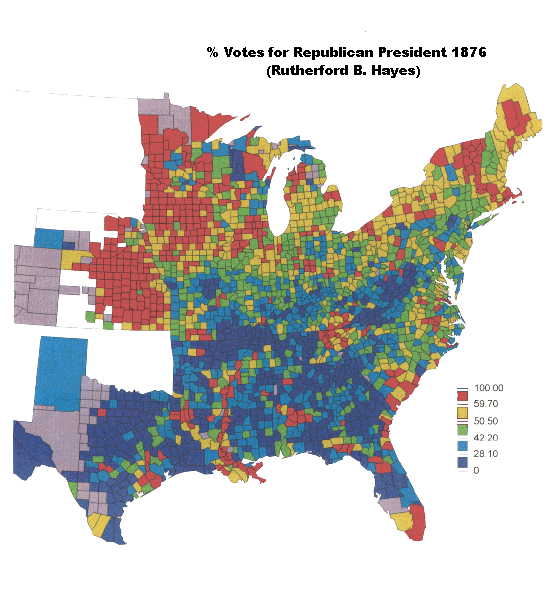|
By
1873, Republicans were losing their enthusiasm for protecting black rights.
Despite the presence of federal troops, sent by President Grant to protect
black voting rights, white Democrats effectively resumed campaigns of violence
and intimidation to suppress the Republican vote, with clearly observable
effects depicted in this map. The formal end to Reconstruction was brought
about in the disputed 1876 Presidential election. The Democratic candidate,
Tilden, won the popular vote, but neither candidate initially had a majority
of electoral votes due to disputes over returns in Florida, Louisiana and
S. Carolina--the only states in which federal troops were still stationed
in 1876. Although they were not numerous enough to stop white intimidation
of black voters, the troops were considered an affront by white Democrats.
In backroom negotiations, Democrats conceded the disputed election returns
to Hayes in return for his agreement to withdraw the reamaining 3000 federal
troops, thereby putting a formal end to Reconstruction and assuring Democratic
control, based on a platform of white supremacy and black disenfranchisement,
throughout the South. To learn more, see Hayes
v. Tilden by Harper's
Weekly. |
|

